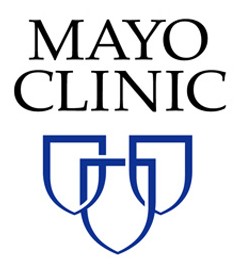 If you are a person with heart disease and you have received treatment at the Mayo Clinic, you’re certainly a fortunate health citizen. The hospital was just ranked #2 best hospital in the U.S. by US News & World Report.
If you are a person with heart disease and you have received treatment at the Mayo Clinic, you’re certainly a fortunate health citizen. The hospital was just ranked #2 best hospital in the U.S. by US News & World Report.
However, if that’s you and the costs of post-op treatment — namely prescription drugs — are out of your financial reach, then you might skip them; thus, undoing your top-notch acute care.
This scenario is discussed in the April 2011 issue of Mayo Clinic Proceedings, which describes a study by Mayo researchers among 209 patients with heart failure who were prescribed statins — three-quarters of whom were on Medicare which has the Part D program that covers outpatient prescription drugs.
One-half of these patients stopped taking the statins due to cost, they told the researchers. Furthermore, one-quarter of patients in the study said they had also skipped prescribed medicines in the past due to cost.
Health Populi’s Hot Points: Welcome to the world of self-rationing in health, where even the lucky health citizen receiving the best acute care money (and third-party health insurance) can buy doesn’t follow through with recommended self-care at home.
The phenomenon of self-rationing health care due to cost is a particularly American invention, as more health citizens are asked to pay more out-of-pocket in a culture of medical entitlement. As additional health care costs are levied onto health consumers in the form of co-pays, higher coinsurance, and greater premium sharing with employers, more consumers are opting out in a variety of ways: from not filling prescriptions and skipping doses to not following up receiving recommended diagnostic tests and other self-care regimens at home.
In the recession, this pattern of health behavior has been tracked by the Kaiser Family Foundation’s Health Tracking Poll, which in December 2010 found that over 1 in 2 U.S. adults did something to self-ration care due to costs.
The challenge of medication adherence is complicated and thorny: there are many reasons why people don’t fill or take prescribed medications, such as unpleasant side effects, inconvenience, and some peoples’ unwillingness to ingest pills by mouth who might prefer another method — say, via dermal patch, inhaler, or even via medication-enhanced food (think: early polio vaccines on sugar cubes).
But poor medication adherence due to cost is another matter. This is where value-based insurance design and creative nudging comes into play. The Mayo researchers point to “better communication” between doctors and patients as a solution to help guide patients to cheaper drugs and treatments. This is necessary, but not sufficient. When it comes to drugs like statins, which treat a condition that for many people is virtually invisible (or perceived to be so), the solution to medication adherence will require several tactics combined to crack this problem.




 Thank you, Trey Rawles of @Optum, for including me on
Thank you, Trey Rawles of @Optum, for including me on  I was invited to be a Judge for the upcoming
I was invited to be a Judge for the upcoming  For the past 15 years,
For the past 15 years,